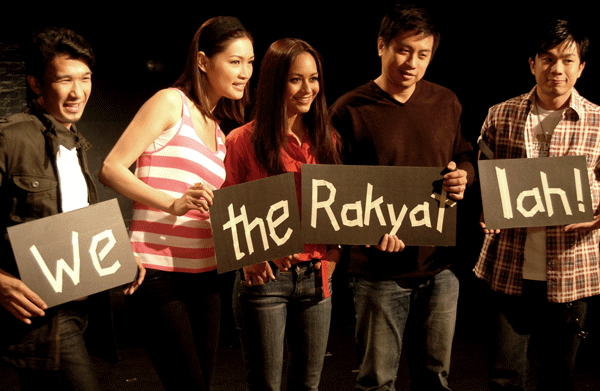Michelle Ng looks at Malaysian racial disharmony and its similarities with Burma’s policies.
 Aung San Suu Kyi has been one of my greatest role models, and it was indeed a great honour to be in her presence just yesterday (19th June 2012) at the Peacock Theatre at the LSE.
Aung San Suu Kyi has been one of my greatest role models, and it was indeed a great honour to be in her presence just yesterday (19th June 2012) at the Peacock Theatre at the LSE.
The reason she plays such an inspirational role is largely due to the parallels of her struggle within the Burmese political landscape and that which is reflected in Malaysia. In this article and the upcoming one, there will be two parallels that I wish to draw between the Burmese military regime and the Malaysian government administration. The first being the similar problems of ethnic divide within the two nations, which will be focused here; the second being the issue of a one-party system in the Burmese military regime and the illusory ‘two-party’ system that is assumed to ensure democracy in Malaysia – this will be the focus of the upcoming write-up.
Ethnic Struggle – Malaysia and Burma
Having read very briefly the paper titled “Ethnic Groups in Burma – Development, Democracy and Human Rights” by Anti-Slavery International, the gist of the ethnic issues facing Burma is basically the failure of the government to act on their promises of equality and autonomy, and that the current regime is essentially a replica of the colonial ‘divide and rule’ machinery. With this as such, it would not be wrong to say that the guarantee of basic rights in the 1974 constitution under Ne Win’s rule which was promised to be allocated “regardless of race, religion, status or sex” is really only illusory. Further, the constant human rights abuses such as the recruitment of child soldiers, forced relocations and forced labour concretises the assumption that there is no intention of change anytime in the near future.
Turning to Malaysia and emphasising on Article 153 of the Malaysian Constitution, it provides for the Yang di-Pertuan Agong (King of Malaysia) the responsibility for “safeguard(ing) the special position of the Malays and natives of any of the States of Sabah and Sarawak (bumiputeras), and the legitimate interests of other communities”. Referring to the implementation of affirmative action policies which apparently only benefit the bumiputeras, it goes without saying that the government has been undergoing great criticism in creating unnecessary racialist distinction within the Malaysians population.
There are several matters in and around Article 153, but I wish to digress from all of them and focus on one: my point of concern is the fact that such policies bring about the institutionalisation of a modern ‘divide and rule’ regime that is similar to the criticisms of the Burmese military dictatorship as indicated above. Whether intentional or unintentional, brilliant or ludicrous, you decide. The seeming brilliance/idiocy of it, and a point of difference from the Burmese situation, I suppose, is the fact that the retaining of such colonial remains has been rather subliminal. My analysis is that this unknowing perception of the Malaysian public is largely due to the clever exercise of democratic procedures of legalisation and national policies by the government to mask the fundamental fact that the relevant processes have been used to quietly foster disharmony within the Malaysian population at large.
To crystallise the aforesaid, it is not simply a matter of racial disharmony, but the fact that the present Malaysian rule has not created any change in mentality that is beneficial and progressive when compared to our colonial days. A scary thought, to say the least.
Referring also to the news on Malaysiakini which reported on Mahathir’s opinion that venacular schools are keeping Malaysians apart, I challenge that his dissent can be principally carried forward into all areas where ethnic divides are maintained and emphasised. To use a quote from the news piece, ‘”Our forefathers wanted so much to be inclusive of those who struggled for our independence. But they agreed on something which is keeping us apart”. Blaming the education system for undermining national unity, Mahathir said people keep raising issues of ethnic identity because they want to remain apart: “Go back to the British time – have the Chinese in towns, Indians in estates, Malays in fishing villages,” he said, mockingly.
In the same way that such policies within the education system retain the ‘divide and rule’ concept, the simple creation of difference via ethnically centered policies that are justified by Article 153 is not fundamentally different.
So what?
There is therefore a necessity to eradicate, albeit slowly and progressively, this creation of divide that has worsened since our early days of independence, without which, I submit that there would really be no possibility of any sort of mature progress within the nation.

Note: By no means does this write-up intend to indicate that the Burmese struggle is absolutely and wholly similar to the Malaysian political landscape. The purpose of this write-up is simply to highlight the overlaps between the two systems. Any malicious implication underscored by the reader is his own. Factual corrections and constructive criticism is however appreciated.

Good to read it and wait for the exciting part 2. But I just can't figure out why a particular race can enjoy mother tongue education by the name of disguise, national school, and the others are termed as venacular schools. What UNESCO recognised of the best education is mother tongue education is being discarded away by the name of unity. Does not there a way to maintain the mother tongue education and achieve harmony and unity ?
Nice!